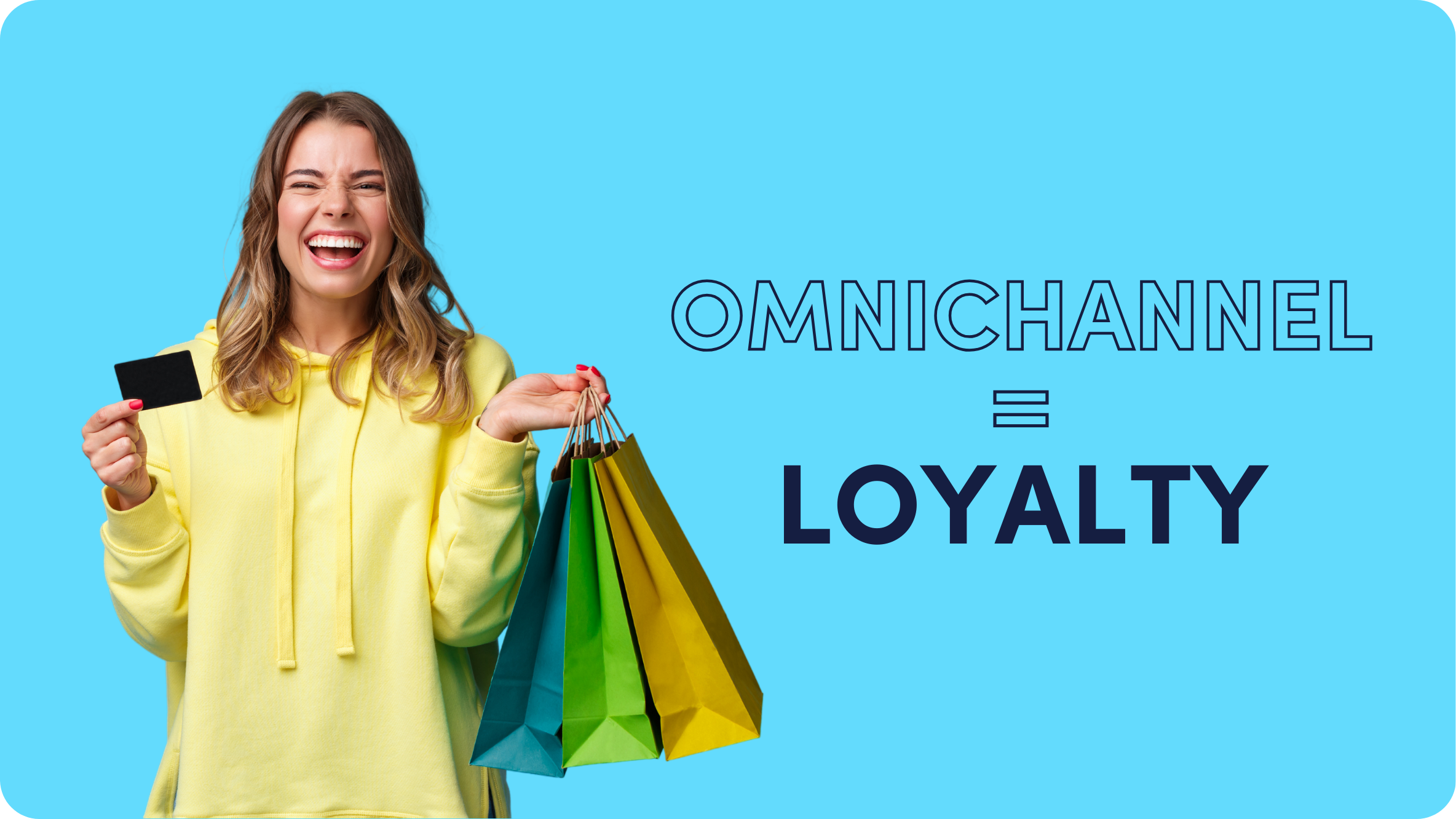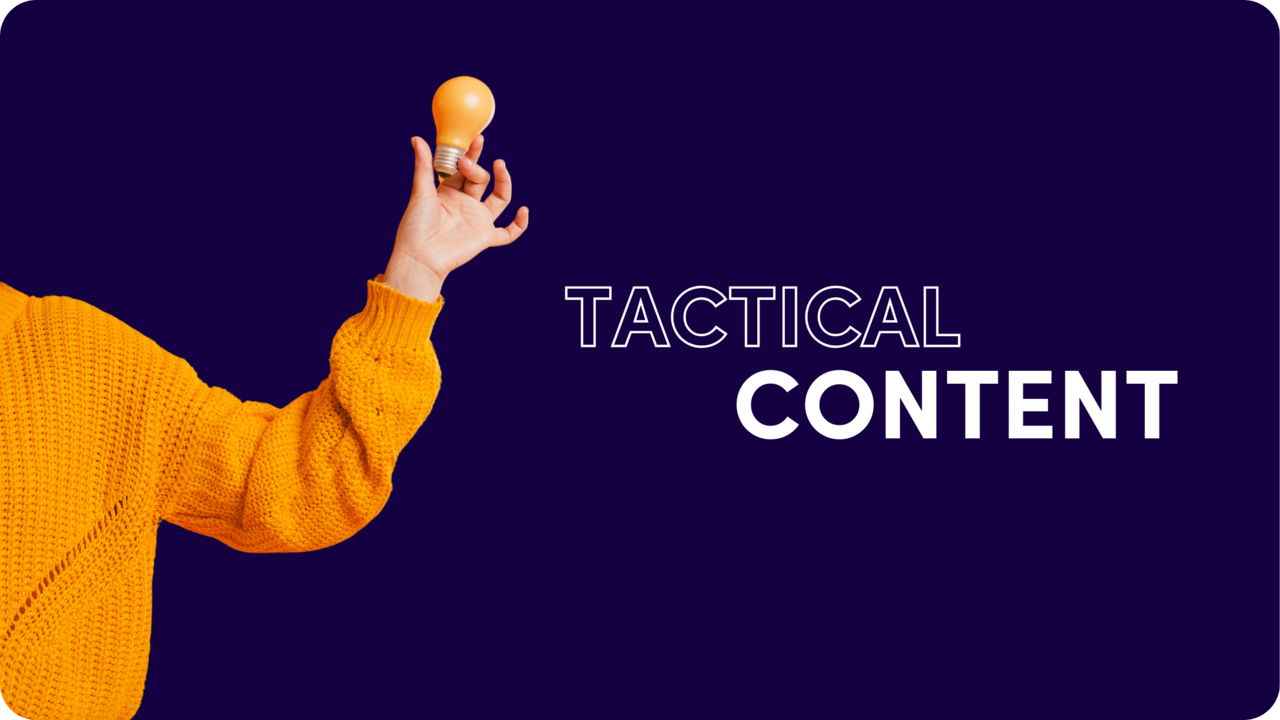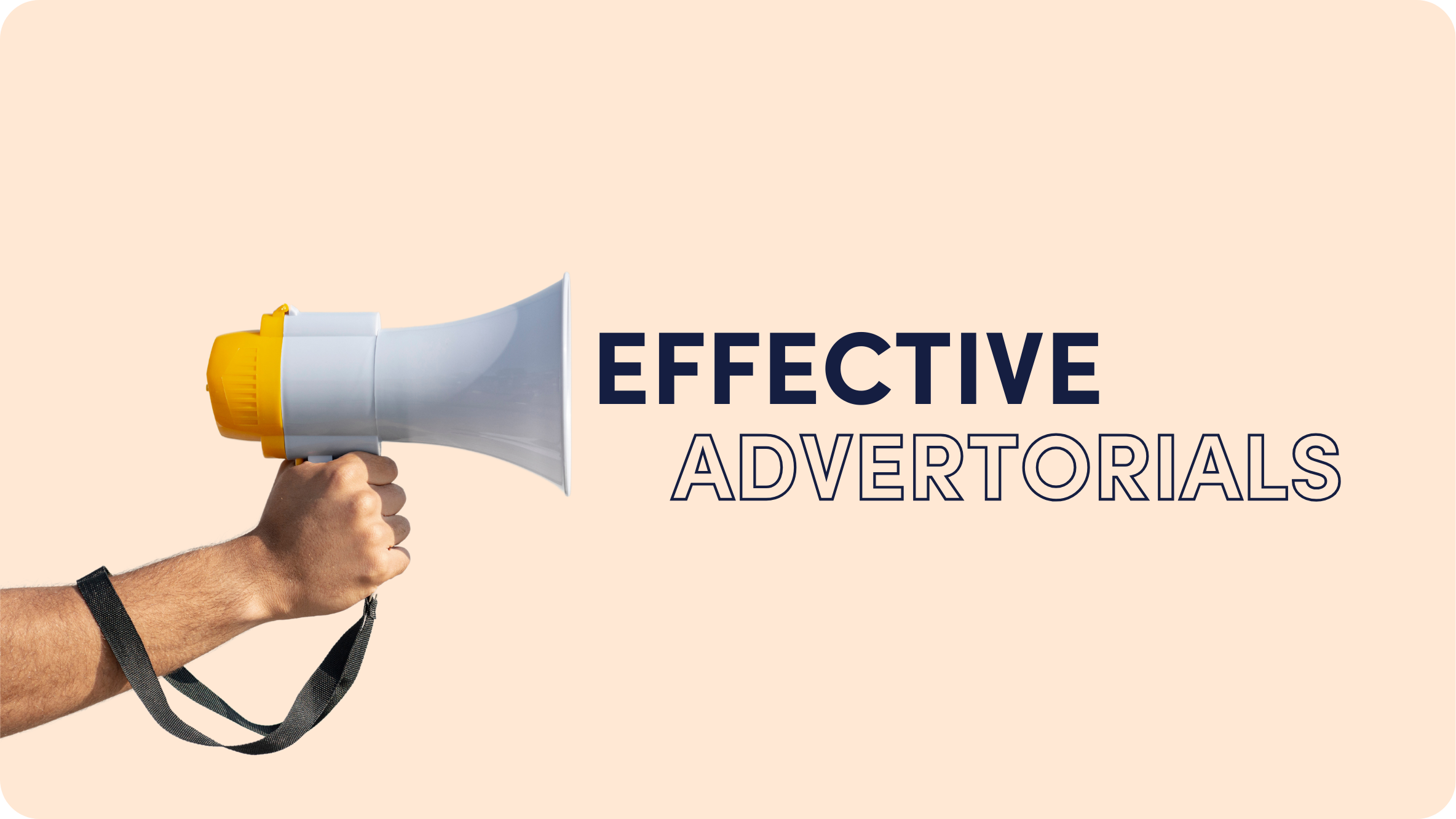How to Build a Full-Funnel Strategy for Beauty Campaigns

Imagine a young woman searching for mascara online, viewing endless websites, products, and content, until an ad catches her eye. Intrigued, she clicks through to a branded product video offering cool tips about how to apply amazing mascara and gets excited. She briefly considers buying the mascara, but…not quite.
Later, as she’s browsing her phone, a retargeting ad presents a fab offer for the same product. She can no longer resist the temptation and decides to buy.
What exactly happened here? In a nutshell: the cosmetic brand engaged the customer across the marketing funnel using different content and channels, which eventually led to a successful conversion.
In the hugely competitive beauty industry, relying on traditional forms of advertising and the occasional influencer partnership is no longer enough to guarantee success. Beauty brands that want to thrive must create and maintain relationships with customers through all stages of their journey, from initial brand awareness and consideration, to purchase and retention.
Online sales are projected to account for 30% of all beauty sales by the year 2026. Particularly for Gen Z and Millennial shoppers, beauty brands will need to leverage the entire funnel of touchpoints – from mobile to desktop, video to social, native to display ads – to interact in the right way with their customer base.
What is a Full-Funnel Beauty Campaign?
In the beauty industry, a full-funnel marketing strategy aims to guide potential customers through every stage of the marketing funnel.
The funnel begins by building brand awareness, then moves on to the consideration stage, when potential customers are weighing up your products or offers. It continues on to the conversion, when the lead purchases the beauty product and becomes a paying customer.
In the post-purchase phase, beauty marketers encourage customers to make repeat purchases and build loyalty to the brand. To market effectively, beauty brands will need to consider each part of the funnel separately and bring them all together to create a full-funnel strategy.
Let’s take a closer look at the marketing funnel, and explore tactics and examples for beauty marketing at every stage:
Top-of-the- Funnel (TOFU) Marketing for Beauty Campaigns
Top-of-funnel (TOFU) marketing aims to raise brand awareness among those who may not have even heard of the beauty brand before. In the beauty industry, TOFU tactics should highlight the pain points and beauty needs of the target audience, establish the brand as an authority in its niche (such as anti-aging skin care, organic cosmetics, perfumes for teens, etc), and provide visually appealing and engaging content that resonates with potential customers. These tactics are also vital for brands that wish to reach new audiences and expand into different markets or demographics.
Top-funnel marketing tactics for beauty businesses
- Social media is used heavily by consumers looking for beauty inspiration, and 91% prefer to shop for beauty products on social platforms. This makes top-of-the-funnel social media tactics, including organic and paid social advertising, crucial for capturing the attention of potential customers.
- Example: LMNT.one is an at-home skin care device that uses light therapy to help smooth the skin and restore glow. The company regularly posts inspirational content on Instagram, appealing to the young, beauty-focused target audience.
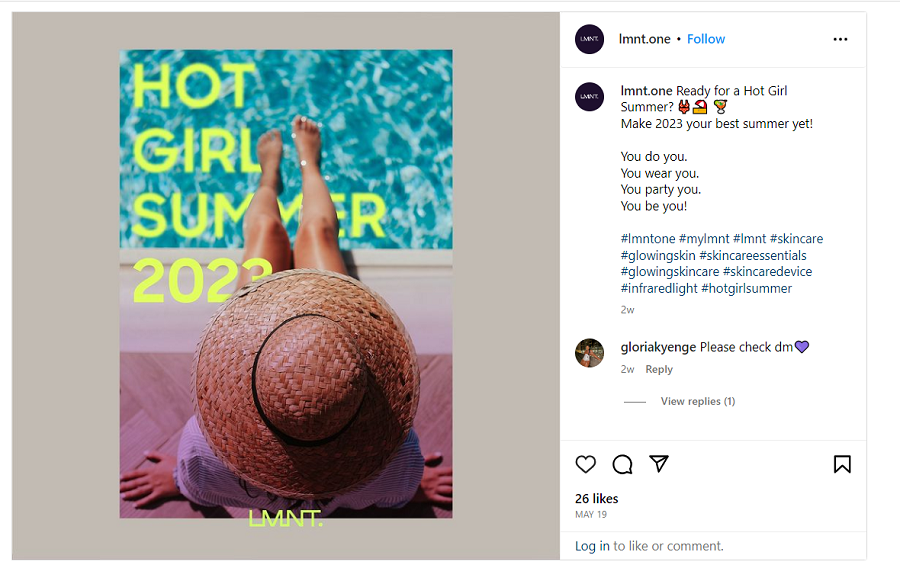
- Native advertising is a marketing tactic that enables brands to promote ads and content on premium news, entertainment, and other websites, capturing the attention of potential customers as they surf the web and visit their favorite sites. With native ads, beauty brands can use granular targeting and a wide range of ad formats, including video, to reach audiences interested in beauty, wellness, makeup, and skincare.
- Example: Global cosmetic brand Avon promoted an awareness video natively using Outbrain’s scroll-to-watch video ad format. As the user scrolls the web page, the video starts playing in the content feed with the sound off, providing an eye-catching, non-intrusive, and highly engaging ad experience. The campaign achieved a 63% video completion rate, and 70% of viewers watched over 75% of the full video.
- Video marketing helps build awareness by showcasing beauty products in action and highlighting the unique and appealing qualities of a brand or product. Video storytelling is a powerful medium, and beauty brands can leverage visual content to attract potential customers. Beauty brands that want to highlight certain product features can create tutorial videos showing how to achieve a certain makeup look and demonstrate the versatility and suitability of products.
- Example: Chanel demonstrates how a video can be visually compelling and provide viewers with valuable information at the same time. The iconic brand showcased its makeup and skincare line for men, Boy De Chanel, with a simple, beautiful, and atmospheric commercial.
- Values-driven marketing is on the rise, particularly among Millenials and Gen Z. These consumers increasingly prioritize sustainability and inclusivity, preferring to shop at brands that promote ethical practices and reflect their own values. Values-driven marketing tactics can include branding, packaging, supporting social causes, and giving charitable donations.
- Example: Cosmetic brand Urban Decay has taken up the important social cause of online bullying prevention, in collaboration with the non-profit organization The Cybersmile Foundation. Via a dedicated page on the Urban Decay website, the brand provides online resources and support to help drive awareness and action about online bullying, at the same time raising the profile of the beauty brand.
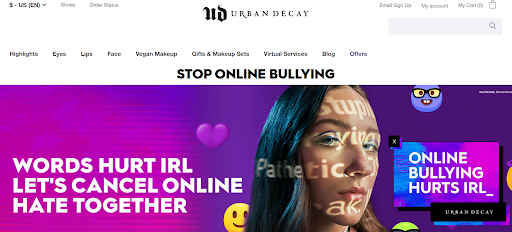
Middle-of-the-Funnel (MOFU) Marketing for Beauty Campaigns
At the middle of the funnel, potential customers have shown interest in your beauty brand and are considering their options. The goal now is to nurture leads by providing information about the products and brand benefits, via how-to beauty videos, influencer endorsements, email marketing, retargeting ads, and other lead-generation tactics to drive interest and consideration. Personalization is a key MOFU tactic, with more than 70% of consumers wanting to receive tailored communications as part of their shopping experience.
Mid-funnel tactics for beauty businesses
- Giveaways and incentive campaigns help sway consumer sentiment and encourage shoppers to convert. In exchange for an email sign-up or social media follow, brands can offer free product samples, giving customers the opportunity to try products for themselves while also building brand trust and appreciation. At the same time, the beauty company builds a list of customer contacts, which can be used for remarketing and future content marketing campaigns.
- Example: Global beauty brand Maybelline launched its “Hauliday” campaign, offering free products to anyone who signs up to become a club member within a certain period of time. Supported on social media by beauty influencers, the campaign went viral, and all the free products were claimed in a flash.

- Social media influencers are a vital component of beauty marketing. Sixty-two percent of women follow beauty influencers and rely on their recommendations and reviews when making purchase decisions. Beauty brands commonly partner with influencers to showcase their products, or may create their own influencer program to reward customers who share the brand on social media. While there are celebrities and influencers who have a massive following, brands can tap into niche market segments using micro- or nano-influencers who have a small but loyal user base.
- Example: Sephora, the global cosmetic brand, takes influencer marketing to the next level with Sephora Squad, an online community of content creators who promote the Sephora brand and products. After all, who knows the brand better than the micro-influencers who use Sephora every day?
- Content marketing is an essential mid-funnel tactic that beauty brands can use to engage potential customers with relevant, interesting, or entertaining information. Blog posts, educational videos, in-depth guides, newsletters, and product recommendations are all examples of content marketing. Quizzes and surveys are interactive and engaging, and also a great way for beauty brands to collect customer information and better understand the needs and interests of the target audience. Questions about skin type, allergies, or preferred ingredients provide valuable feedback to brands.
- Example: Miss Kay is a unique perfume brand offering a collection of compact, affordable fragrances to suit any vibe. Instead of buying an expensive ‘signature’ perfume, customers can choose as many Miss Kay perfumes as they like, and change their scent like they swap outfits. The brand’s website features a cool Vibe Finder, an interactive tool to help visitors find their perfect Miss Kay scent.

Bottom-of-the-Funnel (BOFU) Marketing for Beauty Campaigns
When a potential customer arrives at the bottom of the funnel, they have finally decided to purchase from your beauty brand. The goal now is to smoothly convert customers and remove any impediments that may lead to cart abandonment or incomplete transactions. At this stage, brands can also take advantage of upselling and cross-selling tactics to increase average order value (AOV) and use retention strategies to improve customer lifetime value (CLV).
Bottom-funnel tactics for beauty businesses
- Personalization is a crucial BOFU tactic for beauty businesses. In fact, personalized calls-to-action can increase click-through rates by 202%, driving conversions and sales and directly impacting the bottom line. For instance, beauty companies can send personalized emails to customers who previously abandoned their online shopping cart, with a time-limited discount if they complete the purchase. Or, for customers who purchased in the past, the brand can recommend complementary products, ask for reviews or testimonials, and engage the customer personally in other ways.
- Example: FRÉ Skincare is a brand for active lifestyles. It uses email personalization to engage with customers and maintain ongoing connections that encourage future interactions and purchases. In the personalized email below, FRÉ Skincare invites the customer to review their recent purchase, and perhaps even be featured on the brand website.

- Discounts and special offers are simple yet powerful tactics that brands use to incentivize customers to make a purchase and encourage repeat orders. Brands can offer free shipping, reduced pricing, first-time purchase discounts, or reductions on future purchases to build customer loyalty.
- Example: iHerb, the global health, wellness, and cosmetic webstore, uses several persuasive tactics during the checkout process to convince the customer to complete the sale. These include a visual ‘bar’ that shows how much to add to the cart to receive free shipping, and recommendations for products often purchased together right inside the checkout window.

- Loyalty programs and member clubs are great ways to show appreciation and reward loyal customers, and encourage repeat purchases and orders. Rewards programs allow customers to earn points for each purchase, which can be redeemed for free products or discounts on future purchases, while loyalty programs offer incentives and discounts for repeat purchases and returning customers.
- Example: Most beauty brands offer a loyalty program in some format. Iconic global brand The Body Shop promotes its loyalty club in a pop-up message that appears as soon as a visitor lands on the website. Besides rewards and discounts, the club also provides beauty tips and other relevant content to boost member engagement.

Putting It All Together in a Full-Funnel Beauty Strategy
From the perspective of the beauty marketer, the customer funnel divides neatly into three distinct stages: top, middle, and bottom. However, from the perspective of the customer, there is just one ‘funnel’, which is the sum of all their experiences, touchpoints, and interactions with the beauty brand.
This is probably the most important thing to remember when creating a full-funnel strategy for beauty campaigns. Put yourself in the mind of the customer, who interacts with your brand in different ways and on multiple channels, from social media posts to Google search ads, native ads on news websites, YouTube videos, emails, and of course, the online store and checkout experience. Make it all smooth, seamless, logical, and enjoyable, and you’ll be leveraging the entire funnel to boost your beauty brand and bottom line.


